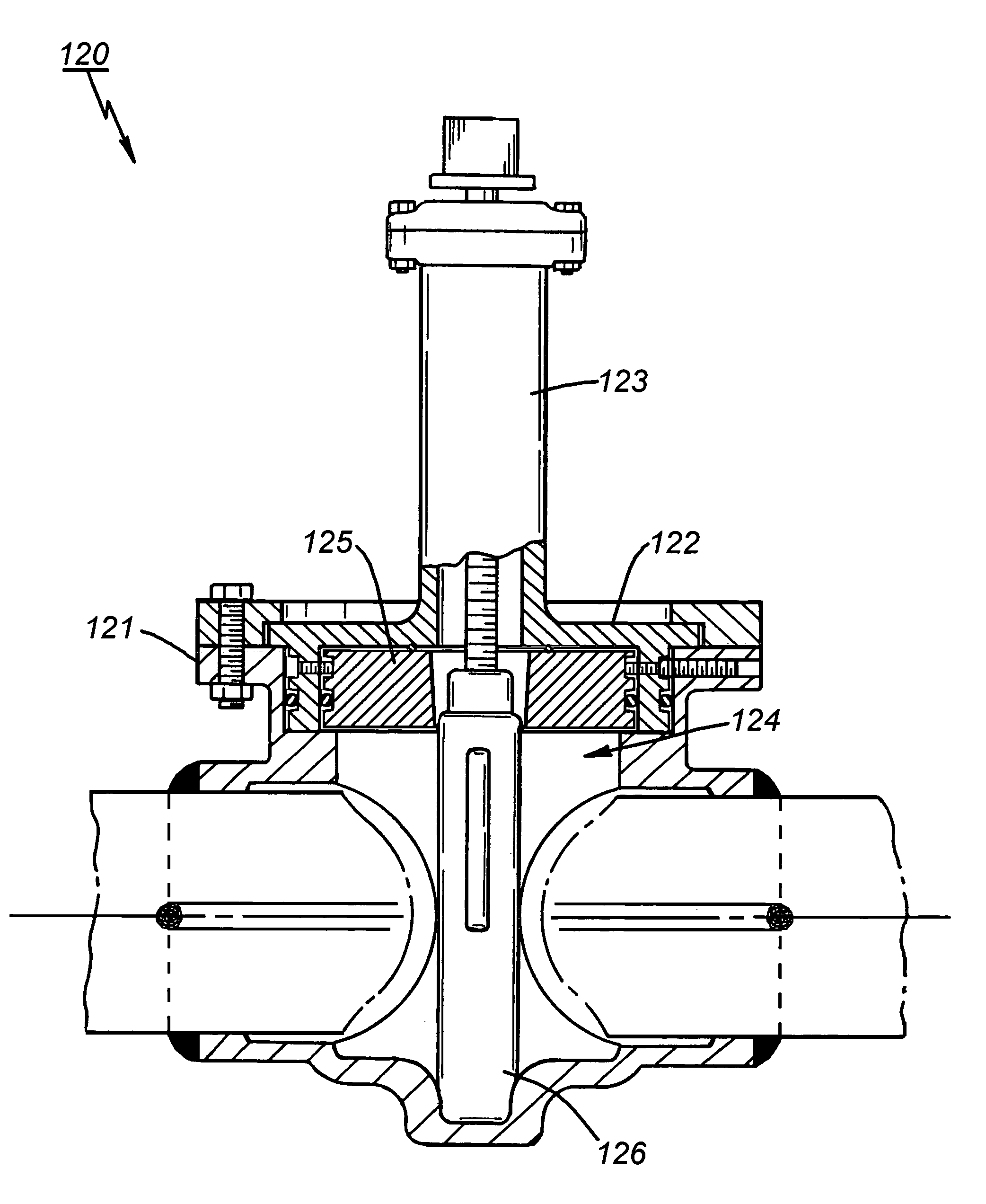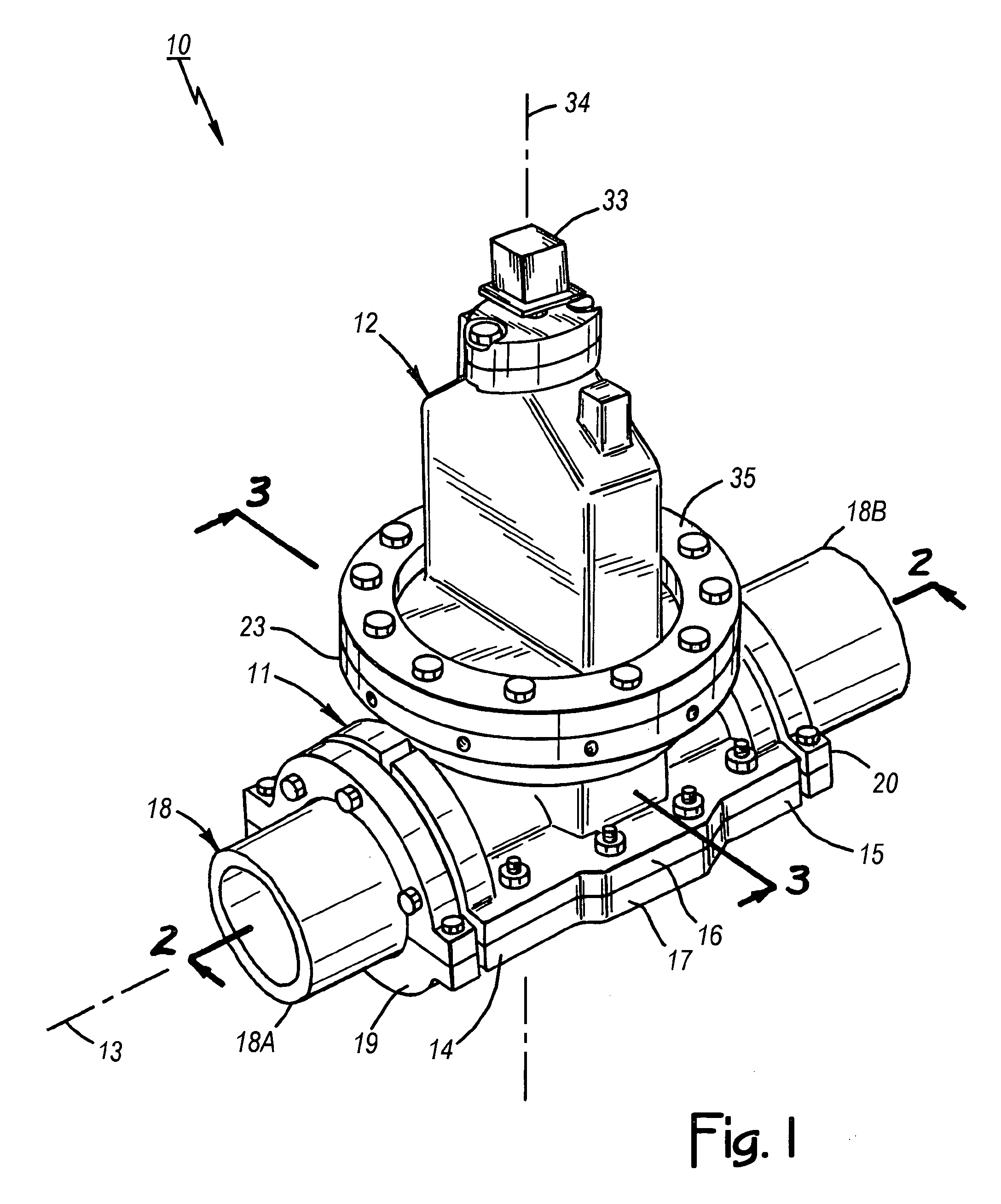Insertion valve and installation method
a technology of valves and installation methods, which is applied in the direction of valve housings, functional valve types, transportation and packaging, etc., can solve the problems of weakened pipes, weakened pipes, and valves in the line containing fluid under pressure, and achieve the effects of less complex, less expensive, and less vulnerable to tension
- Summary
- Abstract
- Description
- Claims
- Application Information
AI Technical Summary
Benefits of technology
Problems solved by technology
Method used
Image
Examples
second embodiment
[0072]Various alternative valve structures are shown in FIGS. 8 through 22. FIG. 8 shows the invention in the form of a valve assembly 100. The valve body 101 of the valve assembly 100 illustrates that it may be installed by welding (e.g., weld at reference numeral 102) or be bolted together (e.g., as illustrated at reference numeral 103). The flange-mating portion 104 of the bonnet 105 mounts over the access opening 106 in a fluid-tight fit without fitting into the access opening. The bonnet-to-gate sealing surface is provided by a sealing member 107 that is removably attached by bolting internally. The sealing member 107 also provides an opening (a gate opening) through which the gate 108 extends from the bonnet 105 in a fluid-tight fit.
third embodiment
[0073]FIG. 9 shows the invention in the form of a valve assembly 110. It is similar to the valve assembly 100, but the bonnet 111 bolts internally to a flange-mating portion 112, and the flange-mating portion 112 bolts onto the flange 113, over the access opening 114, without fitting into the access opening. The flange-mating portion 112 provides an opening (a gate opening) through which the gate 115 extends in a fluid-tight fit. It also provides a bonnet-to-gate sealing surface. Having the bonnet 111 so it can be unbolted, allows installing a tapered gate during manufacturing that is wider at one end than the bonnet-to-gate sealing surface, thereby creating a tighter seal.
fourth embodiment
[0074]FIGS. 10A and 10B show the invention in the form of a valve assembly 120. The valve body 121 is installed by welding, although it could be assembled using bolts or other suitable means. The flange-mating portion 122 of the bonnet 123 fits into the access opening 124. Bonnet-to-gate sealing is achieved by a sealing member 125 that is mounted on the flange-mating portion 122 with a set screw arrangement, although segmented rings can be used instead. The gate 126 extends through the sealing member 125.
PUM
 Login to View More
Login to View More Abstract
Description
Claims
Application Information
 Login to View More
Login to View More - R&D
- Intellectual Property
- Life Sciences
- Materials
- Tech Scout
- Unparalleled Data Quality
- Higher Quality Content
- 60% Fewer Hallucinations
Browse by: Latest US Patents, China's latest patents, Technical Efficacy Thesaurus, Application Domain, Technology Topic, Popular Technical Reports.
© 2025 PatSnap. All rights reserved.Legal|Privacy policy|Modern Slavery Act Transparency Statement|Sitemap|About US| Contact US: help@patsnap.com



